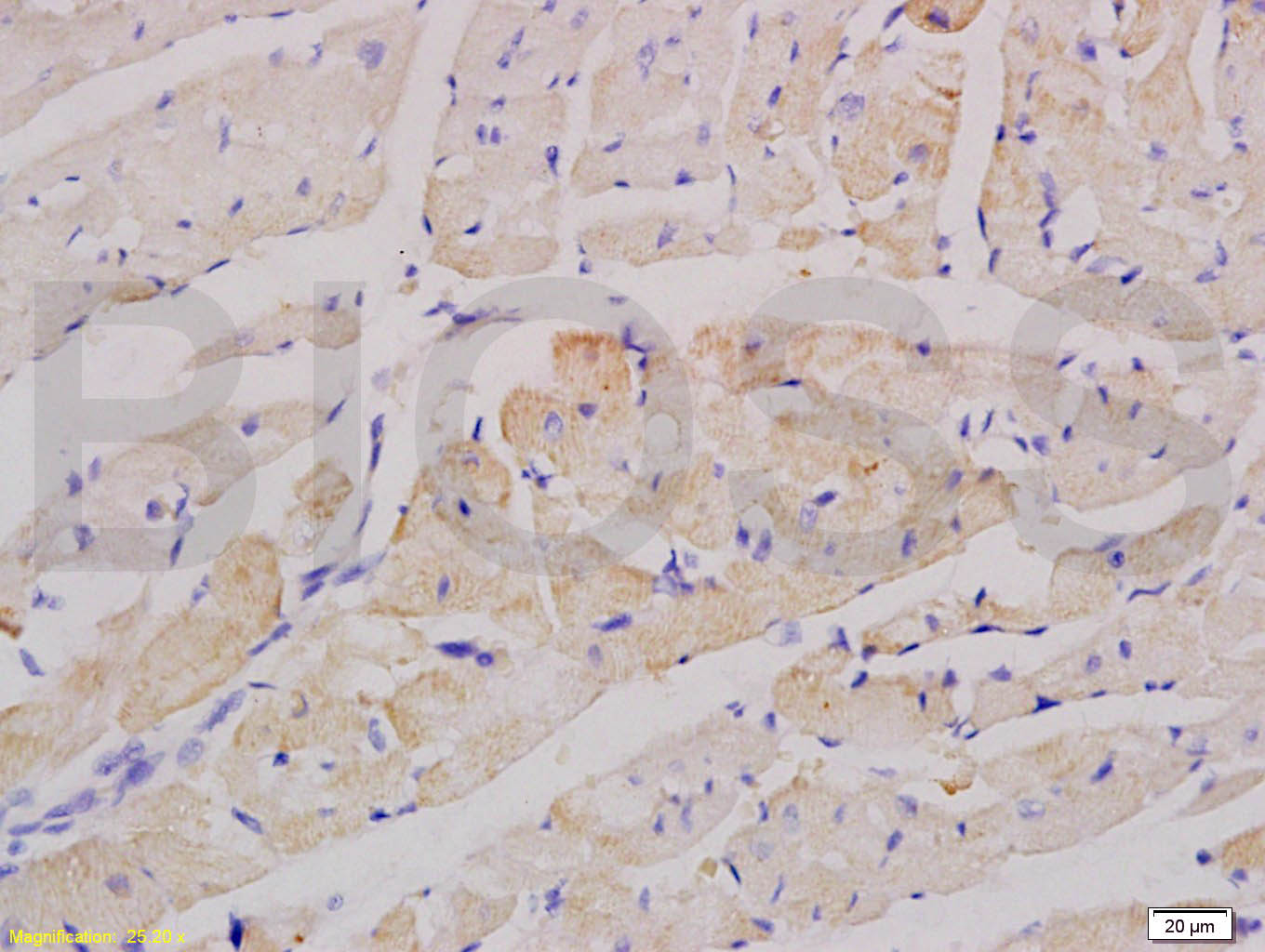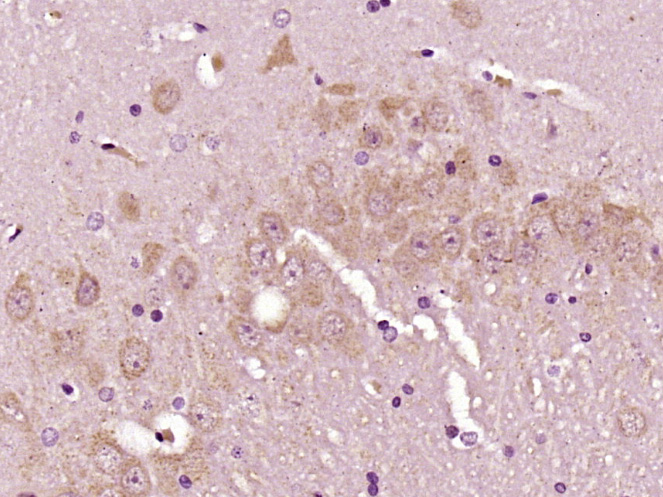
Rabbit Anti-factor V antibody
Coagulation factor V heavy chain; activated protein C cofactor; coagulation factor V; F5; Factor V Leiden; FactorV; FVL; labile factor; proaccelerin; FA5_HUMAN; Proaccelerin, labile factor;Activated protein c cofactor; Coagulation factor V (proaccelerin,
View History [Clear]
Details
Product Name factor V Chinese Name 凝血因子5抗体 Alias Coagulation factor V heavy chain; activated protein C cofactor; coagulation factor V; F5; Factor V Leiden; FactorV; FVL; labile factor; proaccelerin; FA5_HUMAN; Proaccelerin, labile factor; Activated protein c cofactor; Coagulation factor V (proaccelerin, labile factor); Coagulation factor V; Factor V Leiden; PCCF. literatures Research Area Cardiovascular Cell biology immunology Immunogen Species Rabbit Clonality Polyclonal React Species Rat, (predicted: Human, Mouse, Pig, ) Applications ELISA=1:5000-10000 IHC-P=1:100-500 IHC-F=1:100-500 IF=1:100-500 (Paraffin sections need antigen repair)
not yet tested in other applications.
optimal dilutions/concentrations should be determined by the end user.Theoretical molecular weight 78kDa Cellular localization cytoplasmic The cell membrane Form Liquid Concentration 1mg/ml immunogen KLH conjugated synthetic peptide derived from human Coagulation factor V heavy chain: 301-400/2224 Lsotype IgG Purification affinity purified by Protein A Buffer Solution 0.01M TBS(pH7.4) with 1% BSA, 0.03% Proclin300 and 50% Glycerol. Storage Shipped at 4℃. Store at -20 °C for one year. Avoid repeated freeze/thaw cycles. Attention This product as supplied is intended for research use only, not for use in human, therapeutic or diagnostic applications. PubMed PubMed Product Detail This gene encodes coagulation factor V which is an essential factor of the blood coagulation cascade. This factor circulates in plasma, and is converted to the active form by the release of the activation peptide by thrombin during coagulation. This generates a heavy chain and a light chain which are held together by calcium ions. The active factor V is a cofactor that participates with activated coagulation factor X to activate prothrombin to thrombin. Defects in this gene result in either an autosomal recessive hemorrhagic diathesis or an autosomal dominant form of thrombophilia, which is known as activated protein C resistance.
Function:
Central regulator of hemostasis. It serves as a critical cofactor for the prothrombinase activity of factor Xa that results in the activation of prothrombin to thrombin.
Subunit:
Factor Va, the activated form of factor V, is composed of a heavy chain and a light chain, non-covalently bound. The interaction between the two chains is calcium-dependent. Forms heterodimer with SERPINA5.
Subcellular Location:
Secreted.
Tissue Specificity:
Plasma.
Post-translational modifications:
Thrombin activates factor V proteolytically to the active cofactor, factor Va (formation of a heavy chain at the N-terminus and a light chain at the C-terminus).
Sulfation is required for efficient thrombin cleavage and activation and for full procoagulant activity.
Activated protein C inactivates factor V and factor Va by proteolytic degradation.
Phosphorylation sites are present in the extracellular medium.
DISEASE:
Factor V deficiency (FA5D) [MIM:227400]: A blood coagulation disorder leading to an hemorrhagic diathesis known as parahemophilia. Note=The disease is caused by mutations affecting the gene represented in this entry.
Thrombophilia due to activated protein C resistance (THPH2) [MIM:188055]: A hemostatic disorder due to defective degradation of factor V by activated protein C. It is characterized by a poor anticoagulant response to activated protein C resulting in tendency to thrombosis. Note=The disease is caused by mutations affecting the gene represented in this entry.
Budd-Chiari syndrome (BDCHS) [MIM:600880]: A syndrome caused by obstruction of hepatic venous outflow involving either the hepatic veins or the terminal segment of the inferior vena cava. Obstructions are generally caused by thrombosis and lead to hepatic congestion and ischemic necrosis. Clinical manifestations observed in the majority of patients include hepatomegaly, right upper quadrant pain and abdominal ascites. Budd-Chiari syndrome is associated with a combination of disease states including primary myeloproliferative syndromes and thrombophilia due to factor V Leiden, protein C deficiency and antithrombin III deficiency. Budd-Chiari syndrome is a rare but typical complication in patients with polycythemia vera. Note=Disease susceptibility is associated with variations affecting the gene represented in this entry.
Ischemic stroke (ISCHSTR) [MIM:601367]: A stroke is an acute neurologic event leading to death of neural tissue of the brain and resulting in loss of motor, sensory and/or cognitive function. Ischemic strokes, resulting from vascular occlusion, is considered to be a highly complex disease consisting of a group of heterogeneous disorders with multiple genetic and environmental risk factors. Note=Disease susceptibility is associated with variations affecting the gene represented in this entry.
Pregnancy loss, recurrent, 1 (RPRGL1) [MIM:614389]: A common complication of pregnancy, resulting in spontaneous abortion before the fetus has reached viability. The term includes all miscarriages from the time of conception until 24 weeks of gestation. Recurrent pregnancy loss is defined as 3 or more consecutive spontaneous abortions. Note=Disease susceptibility is associated with variations affecting the gene represented in this entry
Similarity:
Belongs to the multicopper oxidase family.
Contains 3 F5/8 type A domains.
Contains 2 F5/8 type C domains.
Contains 6 plastocyanin-like domains.
SWISS:
P12259
Gene ID:
2153
Database links:Entrez Gene: 2153 Human
Omim: 612309 Human
SwissProt: P12259 Human
Unigene: 30054 Human
Product Picture
Antigen retrieval: citrate buffer ( 0.01M, pH 6.0 ), Boiling bathing for 15min; Block endogenous peroxidase by 3% Hydrogen peroxide for 30min; Blocking buffer (normal goat serum,C-0005) at 37℃ for 20 min;
Incubation: Anti-Foagulation factor V Polyclonal Antibody, Unconjugated(SL1040R) 1:200, overnight at 4°C, followed by conjugation to the secondary antibody(SP-0023) and DAB(C-0010) staining
Paraformaldehyde-fixed, paraffin embedded (Rat brain); Antigen retrieval by boiling in sodium citrate buffer (pH6.0) for 15min; Block endogenous peroxidase by 3% hydrogen peroxide for 20 minutes; Blocking buffer (normal goat serum) at 37°C for 30min; Antibody incubation with (factor V) Polyclonal Antibody, Unconjugated (SL1040R) at 1:400 overnight at 4°C, followed by a conjugated secondary antibody (sp-0023) for 20 minutes and DAB staining.
Bought notes(bought amounts latest0)
No one bought this product
User Comment(Total0User Comment Num)
- No comment




 +86 571 56623320
+86 571 56623320
 +86 18668110335
+86 18668110335

